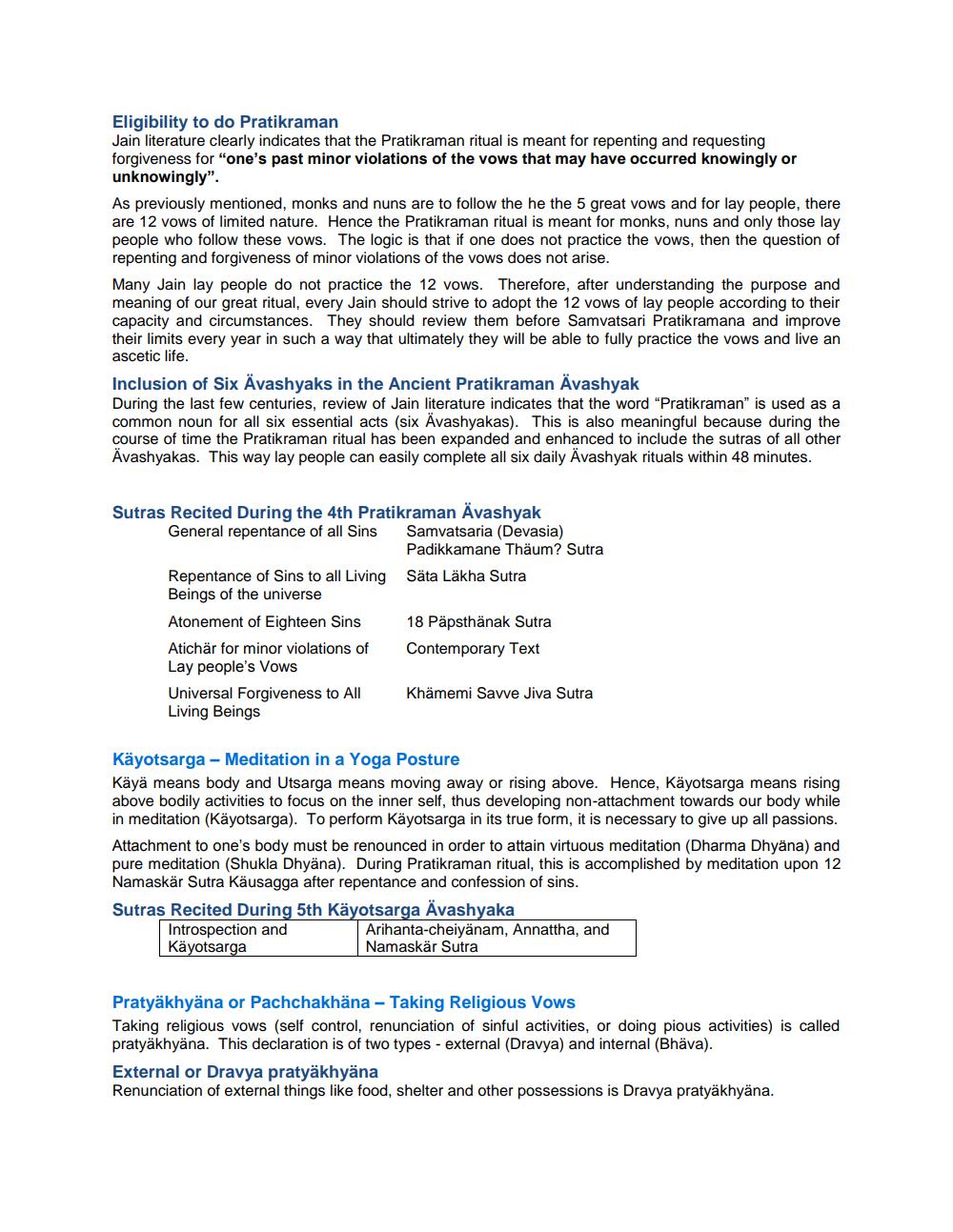________________
Eligibility to do Pratikraman Jain literature clearly indicates that the Pratikraman ritual is meant for repenting and requesting forgiveness for "one's past minor violations of the vows that may have occurred knowingly or unknowingly". As previously mentioned, monks and nuns are to follow the he the 5 great vows and for lay people, there are 12 vows of limited nature. Hence the Pratikraman ritual is meant for monks, nuns and only those lay people who follow these vows. The logic is that if one does not practice the vows, then the question of repenting and forgiveness of minor violations of the vows does not arise. Many Jain lay people do not practice the 12 vows. Therefore, after understanding the purpose and meaning of our great ritual, every Jain should strive to adopt the 12 vows of lay people according to their capacity and circumstances. They should review them before Samvatsari Pratikramana and improve their limits every year in such a way that ultimately they will be able to fully practice the vows and live an ascetic life. Inclusion of Six Ävashyaks in the Ancient Pratikraman Ävashyak During the last few centuries, review of Jain literature indicates that the word "Pratikraman" is used as a common noun for all six essential acts (six Ävashyakas). This is also meaningful because during the course of time the Pratikraman ritual has been expanded and enhanced to include the sutras of all other Ävashyakas. This way lay people can easily complete all six daily Ävashyak rituals within 48 minutes.
Sutras Recited During the 4th Pratikraman Ävashyak General repentance of all Sins Samvatsaria (Devasia)
Padikkamane Thäum? Sutra Repentance of Sins to all Living Säta Läkha Sutra Beings of the universe Atonement of Eighteen Sins 18 Päpsthänak Sutra Atichär for minor violations of Contemporary Text Lay people's Vows Universal Forgiveness to All Khämemi Savve Jiva Sutra Living Beings
Käyotsarga - Meditation in a Yoga Posture Käyä means body and Utsarga means moving away or rising above. Hence, Käyotsarga means rising above bodily activities to focus on the inner self, thus developing non-attachment towards our body while in meditation (Käyotsarga). To perform Käyotsarga in its true form, it is necessary to give up all passions. Attachment to one's body must be renounced in order to attain virtuous meditation (Dharma Dhyana) and pure meditation (Shukla Dhyana). During Pratikraman ritual, this is accomplished by meditation upon 12 Namaskär Sutra Käusagga after repentance and confession of sins. Sutras Recited During 5th Käyotsarga Ävashyaka Introspection and
Arihanta-cheivänam, Annattha, and Käyotsarga
Namaskar Sutra
Pratyakhyana or Pachchakhana - Taking Religious Vows Taking religious vows (self control, renunciation of sinful activities, or doing pious activities) is called pratyakhyana. This declaration is of two types - external (Dravya) and internal (Bhäva). External or Dravya pratyakhyana Renunciation of external things like food, shelter and other possessions is Dravya pratyakhyana.




